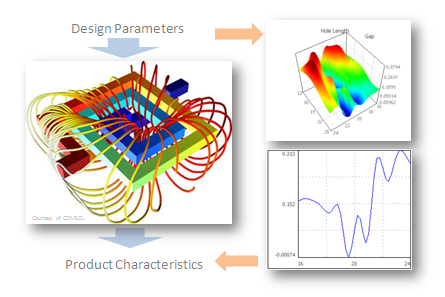Data-driven Modeling and Simulation
There are 2 different ways to create the model codes: physics-model and data-model. Its advantages and disadvantages of which complement each other. The combination of both methods brings advances and undreamt-of possibilities for modeling real objects. OptiY Software offers this approach called meta-modeling which is the combiation of surrogate model and physics-informed machine learning. The new way of modeling is any mix of some imperfect data and some imperfect physical components getting accurate meta-model for real-time computing and it is therefore an indispensable tool for simulation engineers.
| Physics-Model | Data-Model |
|
|
Physical model is used as object for data generation. Numerous commercial simulation systems can be coupled with OptiY. Using of statistical design of experiments, the entire parameter space is stretched and calculated. With these data obtained, accurate meta-model can be mapped using machine learning.
If the data does not have the required quantity to generate accurate metamodels, additional data points can be generated with the help of coupled physics model. Using of adaptive design of experiments from OptiY, which are based on existing data, new targeted data points can be very efficiently proposed and calculated by the physics model. Measurement data can then be mapped together with newly additional simulation data in sufficient quantities to accurate metamodel.

Case Studies
- Data-driven Modeling and Simulation of a double Spring Mass Damper System
- Auto-Extraction of Modelica Code from Finite Element Analysis or Measurement Data
- Magnetic Switch Mechanism for Circuit Breakers



